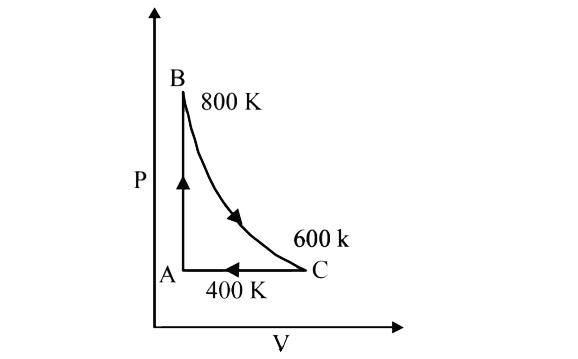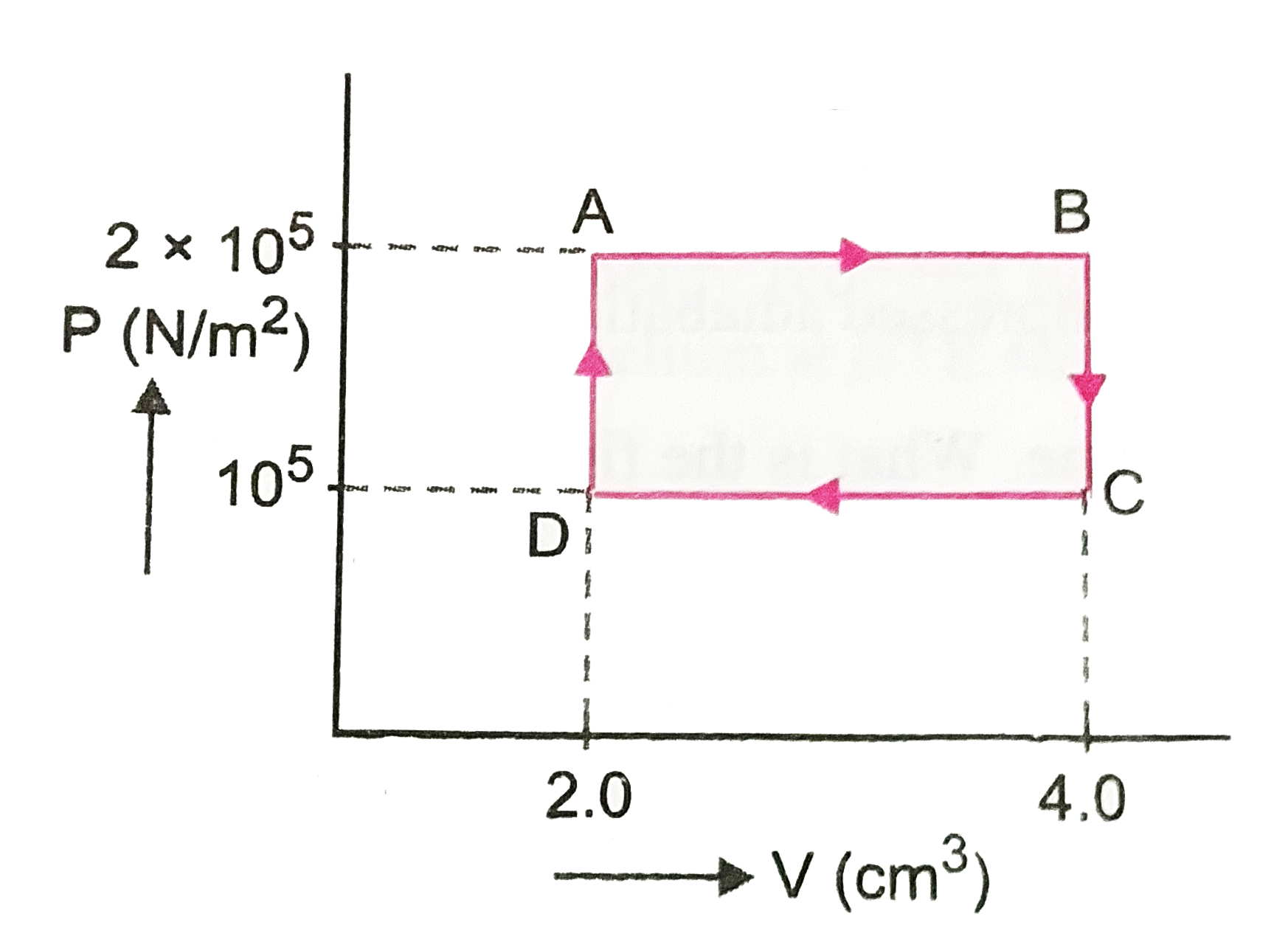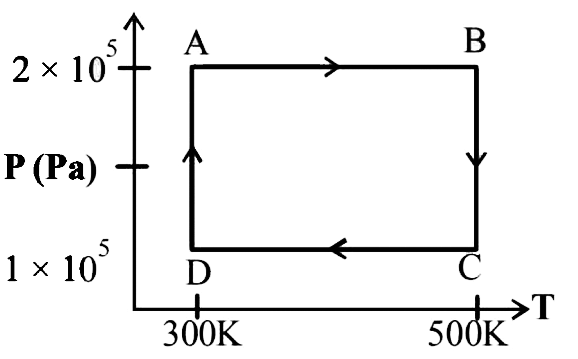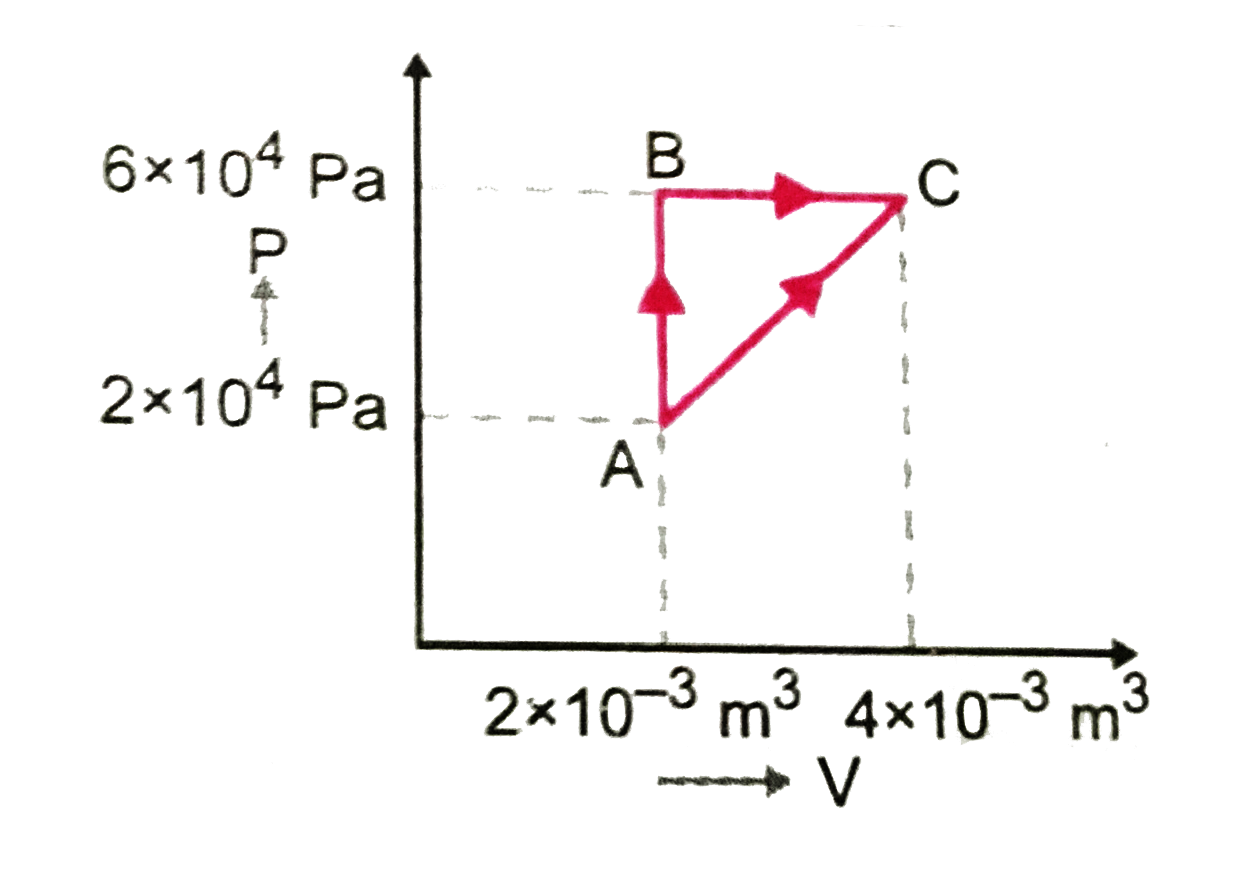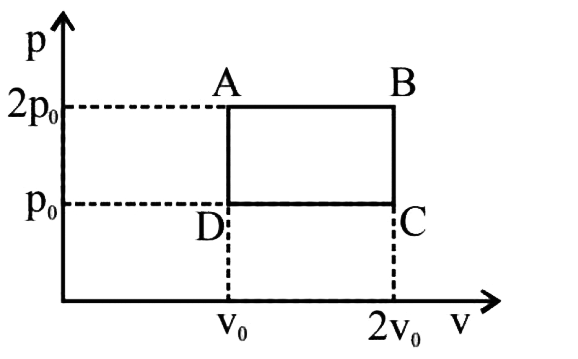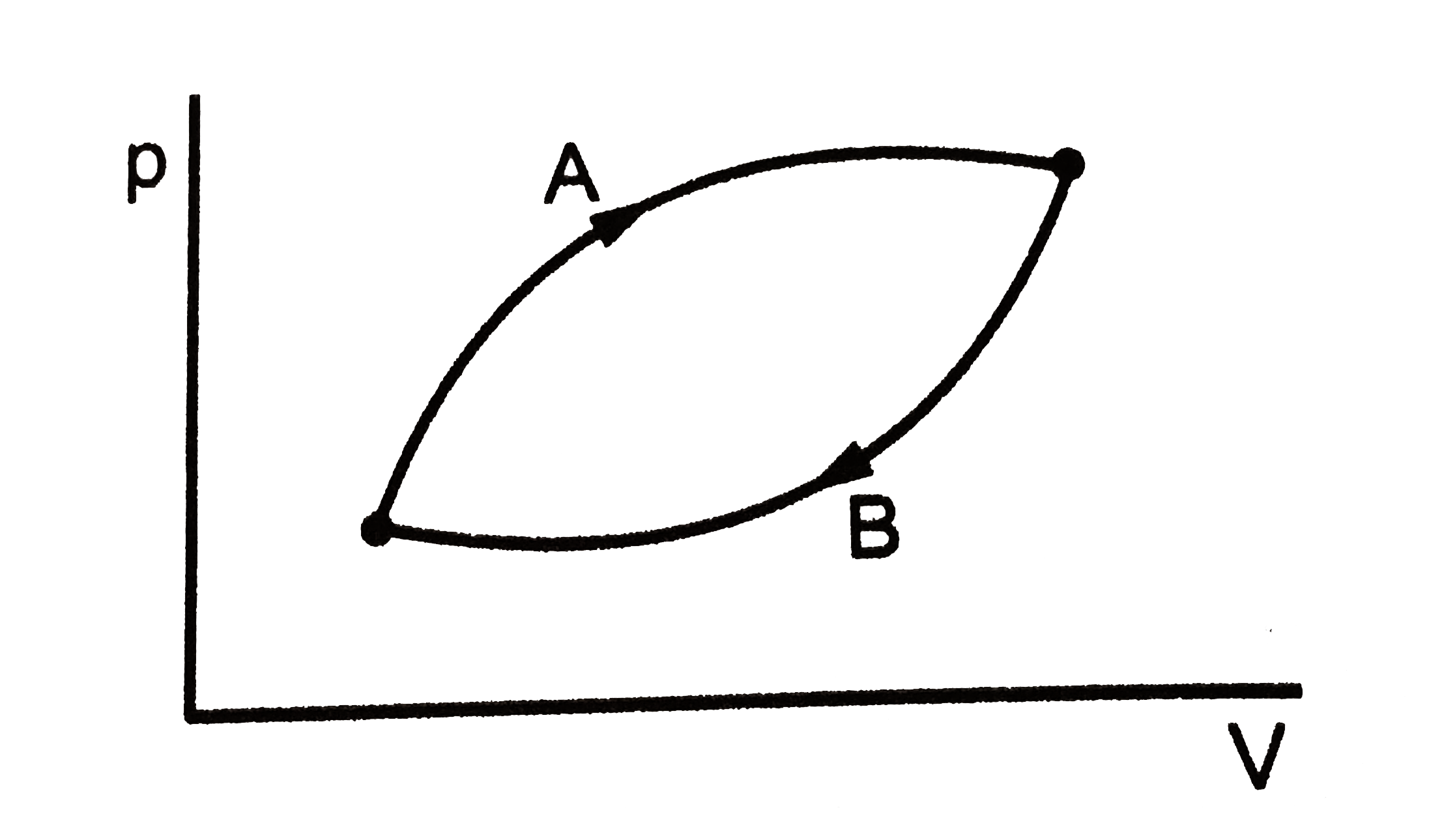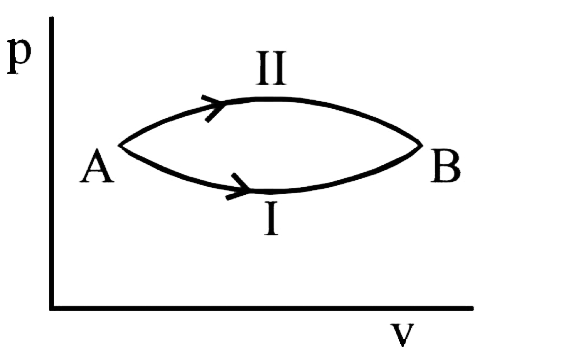Multiple choice questions. from PRADEEP PHYSICS Chapter 11 THERMODYNAMICS for Class 11
| Class 11 | PHYSICS |
| Chapter | THERMODYNAMICS |
| PRADEEP PHYSICS | Multiple choice questions. |
| Medium | English |
| Academic Year | 2023-2024 |
Question 2
Consider two containers A and B containing identical gases at the same pressure, volume and temperature. The gas in container A is compressed to half of its original volume isothermally while the gas in container B is compressed to half of its original value adiabatically. The ratio of final pressure of gas in B to that of gas in A is View SolutionQuestion 3
Consider a spherical shell of radius R at temperature T. The black body radiation inside it can be considered as an ideal gas of photons with internal energy per unit volume u=UV∝T4 and pressure P=13(UV). If the shell now undergoes an adiabatic expansion the relation between T and R is :View SolutionQuestion 12
A thermodynamic system is taken from an initial state I with internal energy Ui=−100J to the final state f along two different paths iaf and ibf, as schematically shown in the figure. The work done by the system along the pat af, ib and bf are Waf=200J,Wib=50JandWbf=100J respectively. The heat supplied to the system along the path iaf, ib and bf are Qiaf,Qib,Qbf respectively. If the internal energy of the system in the state b is Ub=200JandQiaf=500J, The ratio QbfQib is
 View Solution
View SolutionQuestion 30
Two moles of ideal helium gas are in a rubber balloon at 30∘C. The balloon is fully expandable and can be assumed to require no energy in its expansion. The temperature of the gas in the balloon is slowly changed to 35∘C. The amount of heat required in raising the temperature is nearly (take R
=8.31J/mol.K)View SolutionQuestion 32
One mole of an ideal gas goes from an initial state A to final state B via two processs : It first undergoes isothermal expansion from volume V to 3V and then its volume is reduced from 3V to V at constant pressure. The correct P−V diagram representing the two process in (figure)View SolutionQuestion 33
An ideal gas goes from State A to state B via three different process as indicate in the P−V diagram.

If Q2,Q3 indicates the heat absorbed by the gas along the three processes and ΔU1,ΔU2,ΔU3 indicates the change in internal energy along the three processes respectively, thenView SolutionQuestion 41
On observing light from three different stars P, Q and R, it was found that intensity of violet colour is maximum in the spectrum of P, the intensity of green colour is maximum in the spectrum of R and the intensity of red colour is maximum in the spectrum of Q. if TP, TQ and TR are respective absolute temperature of P, Q and R. then it can be concluded from the above observation thatView SolutionQuestion 46
The balck body specturm of an object O1 is such that its radiant intensity (i.e., intensity per unit wavelength interval) is maximum at a wavelength of 200nm. Another object Q2 has the maximum radiant intensity at 600nm. The ratio of power emitted per unit area by source Q1 to that of souce O2 is View SolutionQuestion 47
Three rods of Copper, Brass and Steel are welded together to from a Y shaped structure. Area of cross-section of each rod =4cm2. End of copper rod is maintained at 100∘C where as ends of brass and steel are kept at 0∘C. Lengths of the copper, brass and steel rods are 46, 13 and 12 cm respectively. The rods are thermally insulated from surroundings excepts at ends. Thermal conductivities of copper, brass and steel are 0.92, 0.26 and 0.12 CGS units respectively. Rate of heat flow through copper rod is : View SolutionQuestion 48
A solid body of constant heat capacity 1J/∘C is being heated by keeping it contact with reservoirs in two ways:
(i) Sequentially keeping in contact with 2 reservoirs such that each reservoir supplies same amount of heat.
(ii) Sequentially keeping in contact with 8 reservoir such that each reservoir supplies same amount of heat.
In both the cases body is brought from initial temperature 100C to final temperature 200∘C. Entropy change of the body in the tow cases respectively is : View SolutionQuestion 56
An ideal gas under goes a quasi static, reversible process in which its molar heat capacity C remains constant. If during this process the relation of pressure P and volume V is given by PVn=constant, then n is given by (Here CPandCV are molar specific heat at constant pressure and constant volume, respectively):View Solution
All Exercises from PRADEEP PHYSICS Class 11 PHYSICS THERMODYNAMICS
- Advanced problems for competitions
- Assertion- Reason Type Questions
- Conceptual Problems
- Curiosity Question
- Higher order thinking skills
- Interger Type questions
- Long answer questions
- Long answer questions(NCERT)
- Multiple choice questions
- Multiple choice questions (NCERT)
- Multiple choice questions.
- NCERT Questions
- Problems for practice
- Sample problems
- Short answer questions
- Short answer questions(NCERT)
- Solved examples
- Value based Questions
- Very short answer questions
- Very short answer questions(NCERT)



